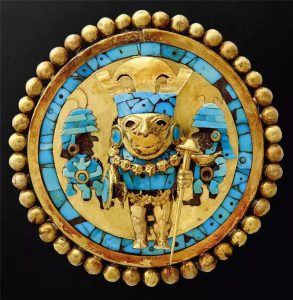Studies suggest that big, round eyes have a powerful “cuteness” effect on humans, making us perceive creatures with such eyes as incredibly adorable. Human babies and cats are perfect examples of this. However, while both humans and cats have clear, bright eyes, there’s one key difference: Cats’ pupils are actually vertical!
-
Diverse Pupils in Nature
In fact, animals in the natural world have a wide variety of pupil shapes. The shape of an animal’s pupil is closely related to its environment and its position in the food chain. For instance, most herbivores have square-shaped pupils. As prey animals, they are often threatened by carnivores and need to remain highly alert. Square pupils provide them with a much broader field of vision, which is beneficial for creating a panoramic view and monitoring their surroundings. Similarly, some marine creatures, like certain fish, have crescent-shaped pupils that help them better capture light and reduce distortion caused by the refraction and reflection of light in water. Even cuttlefish possess W-shaped pupils, allowing them to receive light from multiple angles in the dim underwater environment, providing them with excellent visibility. Then there’s the vertical slit-shaped pupil of cats—what makes it so well-suited for them?
-
The Perfect Fit: Vertical Pupils for Cats
Vertical pupils are most commonly found in nocturnal hunters that rely on ambush tactics. Why are these pupils advantageous for such predators? They help control the amount of light entering the eyes. The structure of vertical pupils allows for greater dilation and contraction abilities. For example, a cat’s vertical pupil can expand 135 times, while a human’s round pupil can only dilate up to 15 times. As hunters that often prowl during dusk and night, controlling light levels is crucial for spotting prey. This allows cats to precisely focus on their targets. Cats, as ambush predators, need excellent precision in locating their prey, and vertical pupils enhance their ability to do this.The vertical slit shape provides greater depth of field vertically, which helps cats track the movement of prey close to the ground. Additionally, vertical pupils make it easier to estimate horizontal distances. The narrow horizontal shape and wide vertical slit maximize the blur of the horizontal line, improving focus and helping cats judge the distance of their prey. Overall, for cats that hunt small birds and rodents during twilight, vertical pupils provide the perfect ability to navigate dim environments, enhance targeting precision, and lock in on their prey—making them perfectly suited for cats. While most domestic cats have vertical pupils, large wild cats are different; their pupils are round. Researchers speculate this may be related to the size of these big cats and their hunting methods. Large felines typically hunt prey like antelope and buffalo, so they don’t need such fine-tuned vision for targeting. Moreover, their hunting methods differ: unlike cats that often ambush prey at night, cheetahs rely on speed for pursuit hunting, and lions often hunt in groups. Therefore, round pupils help them capture more color and visual detail, aiding their hunting skills.

-
The Clever Use of Cats’ Vertical Pupils: The Cat Clock
One of the most fascinating uses of a cat’s vertical pupils is—telling time! By observing the changes in a cat’s pupil in response to light, you can tell the time, a method recorded in various cultures. In China, Su Dongpo once wrote in “The Classification of Things in the World” that the cat’s eye “knows the time.” The poem describing this reads: “The midday and midnight hours are round, with the other times following a pattern like the shape of a ginkgo leaf or a coin.” In Japan, there’s also a saying: in ancient times, skilled ninjas would use the cat’s pupil to judge the time by saying, “At 6 o’clock, the pupil is round; at 5 or 7, it’s like an egg; at 4 or 8, it’s like the core of a persimmon; at 9 o’clock, it looks like a needle.”
It seems that cat owners don’t even need a clock at home anymore—just take a look at your cat’s eyes, and you’ll have a pretty good idea of the time! If you’re curious about more fun cat facts, feel free to leave a comment or share pictures in the discussion section. Let’s connect and exchange ideas!





